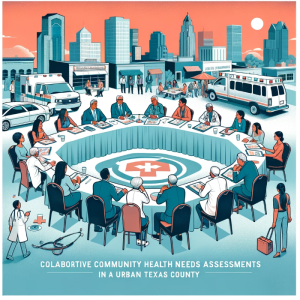
New Research Reveals 4 Ways to Build Equity Into Implementation
“What good is a breakthrough if it never reaches the people who need it most?”
It’s a question that haunts public health—especially for communities facing the steepest health inequities. Even when researchers develop life-saving interventions, translating those findings into real-world impact in underserved settings often gets stuck in a maze of misaligned priorities, confusing frameworks, and top-down planning.
But what if we flipped the script? What if communities themselves helped shape the tools that determine how health interventions are implemented?
That’s exactly what a groundbreaking new study from the DECIPHeR Alliance set out to do—and the result is IM4Equity, a health equity implementation framework that could change the game.
Why Existing Frameworks Fall Short
Over the past two decades, implementation science has blossomed into a powerful field. Researchers use it to identify the factors that make or break the success of new health programs—like who delivers them, how they’re supported, and what barriers exist at organizational or community levels.
But here’s the catch: of the over 140 frameworks currently used in implementation science, only 12 even mention equity.
Even fewer ask the people most affected by health inequities to help design those frameworks.
This oversight isn’t just academic—it’s deeply personal. Think of a local community clinic trying to reduce high blood pressure among Black adults. They might know which interventions work in hospitals, but applying those same approaches in under-resourced settings with histories of mistrust and structural racism? That’s a whole different ballgame.
Yet the existing tools weren’t built with these realities in mind.
Meet IM4Equity: A Community-Driven Meta-Framework
The team behind IM4Equity—short for Crosswalk of 4 IMplementation Frameworks to advance health Equity—wanted to fix that. Backed by the NIH-funded DECIPHeR Alliance, which includes seven research-community partnerships across the U.S., they set out to build something new: a framework that integrates community voices from the start.
Here’s how they did it:
- They crosswalked four of the most widely used frameworks—CFIR, EPIS, PRISM, and HEIF—to identify shared themes and equity-specific gaps.
- They held multiple rounds of focus groups with both researchers and community partners to test, challenge, and improve the new framework.
- They simplified the language and visuals to make the tool more accessible to non-academic users.
- They built tools—like a blank template and a step-by-step guide—to help communities co-create their own implementation strategies.
The result? A new meta-framework that’s not only scientifically robust but also equity-informed and co-owned by the people it aims to serve.
What Makes IM4Equity Different
Unlike previous frameworks that were developed in boardrooms and academia, IM4Equity was co-created with community input every step of the way.
That means:
- It values lived experience as much as peer-reviewed evidence.
- It works across settings—from clinics and schools to faith-based organizations.
- It identifies both barriers and assets—like trust networks or cultural norms—that are often invisible in top-down models.
- It includes a “bridging factors” domain, which looks at how different groups (e.g., researchers and residents) can align their priorities for more effective implementation.
In plain terms: IM4Equity helps teams on the ground figure out not just what to do, but how to do it equitably.
Why This Matters Now
The stakes couldn’t be higher. From rising maternal mortality rates in Black communities to asthma disparities in children, health inequities are deeply embedded in our systems.
To tackle them, we need more than just good science—we need implementation strategies rooted in justice, cultural humility, and partnership.
IM4Equity offers a roadmap for doing just that. It’s not just a framework—it’s an invitation to reimagine who gets to sit at the table when we design health interventions.
And it arrives at a moment when public health is reckoning with its own blind spots.
What Comes Next?
IM4Equity is already being used across the DECIPHeR Alliance’s multi-site projects focused on heart and lung disease, tobacco use, and pediatric asthma. But the developers hope it spreads far beyond.
They’re encouraging other research-community partnerships to adopt, adapt, and improve the tool. They also want feedback—because the point isn’t to create a rigid model, but to launch a movement toward more inclusive, effective public health research.
As one participant put it during a focus group:
“We’re tired of being studied. We want to be co-authors of the solutions.”
Let’s Keep the Conversation Going
IM4Equity is a step forward—but it’s just the beginning.
💬 What frameworks are you using in your equity work?
💬 How are community voices shaping your implementation strategies?
💬 What would make tools like IM4Equity easier to use in your setting?
Drop your thoughts in the comments or tag us on social. Your insights could help refine the next generation of tools built for—and with—the communities we serve.
Want to learn more or try IM4Equity with your team? Check out the resources developed by the DECIPHeR Alliance and start building a more just and effective implementation strategy today.
Because equity isn’t a checkbox—it’s the blueprint.
Time is Running Out – Act Now for Public Health!
Access trusted insights that help you lead change in your community. Subscribe now for your free weekly update on public health’s most pressing issues.
🔥 Your action matters! Share this blog right now and help grow our network of changemakers.



